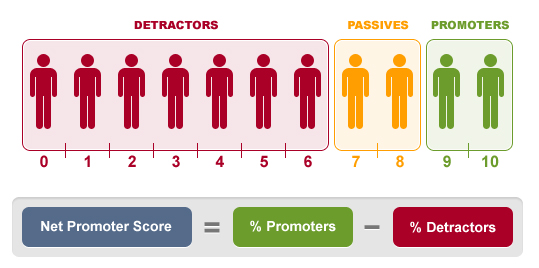eNPS: Measure your Company’s Health
The human body is capable of amazing things. We run, dance, play sports and do various other activities. However, if not taken care of properly, our capabilities become limited because of unhealthy habits.
Much as the human body can suffer from health issues, so can companies. Various negative outcomes — including high turnover and the flattening or declining of growth rates — result from an unhealthy company. While we are able to visit the doctor to diagnose possible health problems, how do we assess a company’s health?
This is where the Employee Net Promoter Score (eNPS) comes into play.
What is eNPS?
The satisfaction and loyalty of employees can be evaluated using eNPS. Through surveys, eNPS examines how likely an employee is to recommend the organization as a place to work. Based on the results of the eNPS survey, companies are able to assess the health of their organization and determine improvement areas, which benefit employees, customers, and the company as a whole.
How is eNPS determined?
eNPS centers around the question: “On a scale of 0 to 10, how likely are you to recommend COMPANY X to your family and colleagues as a place to work?” Answers are categorized as promoters, passives or detractors, as illustrated below.

- Promoters – Those who answer within the 9-10 range are promoters. Promoters are individuals who actively recommend and tell people about the company.
- Passives – Those who fall within the 7-8 range are passives. They are the ones who are content or neutral, but do not actively engage in promoting the company.
- Detractors – Those who fall within the 0-6 range are detractors. Detractors are employees who would not recommend the company as a place to work.
These results are plugged into the equation: Promoters – Detractors = eNPS. Scores can range anywhere between -100 to 100 for various departments. Together, these scores determine the overall health of the company. Scores falling below 0 indicate areas needing significant improvement, while scores above 50 illustrate areas of excellence that should be maintained.
Higher scores have been associated with lower turnover rates and an increase in growth and profitability within companies. The idea is that happy employees lead to a better customer experience. This has been shown to increase Net Promoter Score (NPS) — or customer satisfaction and loyalty — and thus, results in the company’s growth.
It is important to understand that eNPS, like an annual physical checkup, should be conducted on a regular basis, and the results should be tracked. These results will assist in analyzing the company’s health and growth. “The Benchmarking Dilemma: Internal vs External” is an excellent post regarding ways of using eNPS.
Patterns of a Healthy Company
So, once you receive your eNPS, what do you do? The goal of eNPS is to help companies measure employee engagement, and recognize and improve their organizational culture. As mentioned earlier, benchmarking is a way of doing this. Benchmarking is a kind of ‘medical history’ for the company, and growth and direction can be analyzed using it. Patterns can also be recognized. Through various analyses of companies, we’ve come to discover some qualities that high-scoring companies possess: inspiration, connection, and trust.
Inspire employees. Giving employees a reason to work is an effective way to improve eNPS. People are looking for meaning in their lives, and providing them with the opportunity to change and strive for more encourages them to engage with the company. A good way to start is to begin a conversation with employees and develop from there. Create a list. Build a focus. Strive for that goal.
Connect employees to customer impact. Employees want to know how they are performing. Many employees want to know that they are making an impact on customers. Therefore, it’s important that companies provide channels that allow for the employee-customer connection to happen. The usage and feedback from social media is a tool that helps to make this happen.
Build trust with employees. Like any kind of relationship, trust is key. Employees who have trust in a leader and/or company are more willing to recommend and engage with it. It is important that leaders have open communication with employees so that needs and issues can be addressed. Accountability also has a significant impact on trust, and this applies to all individuals.
